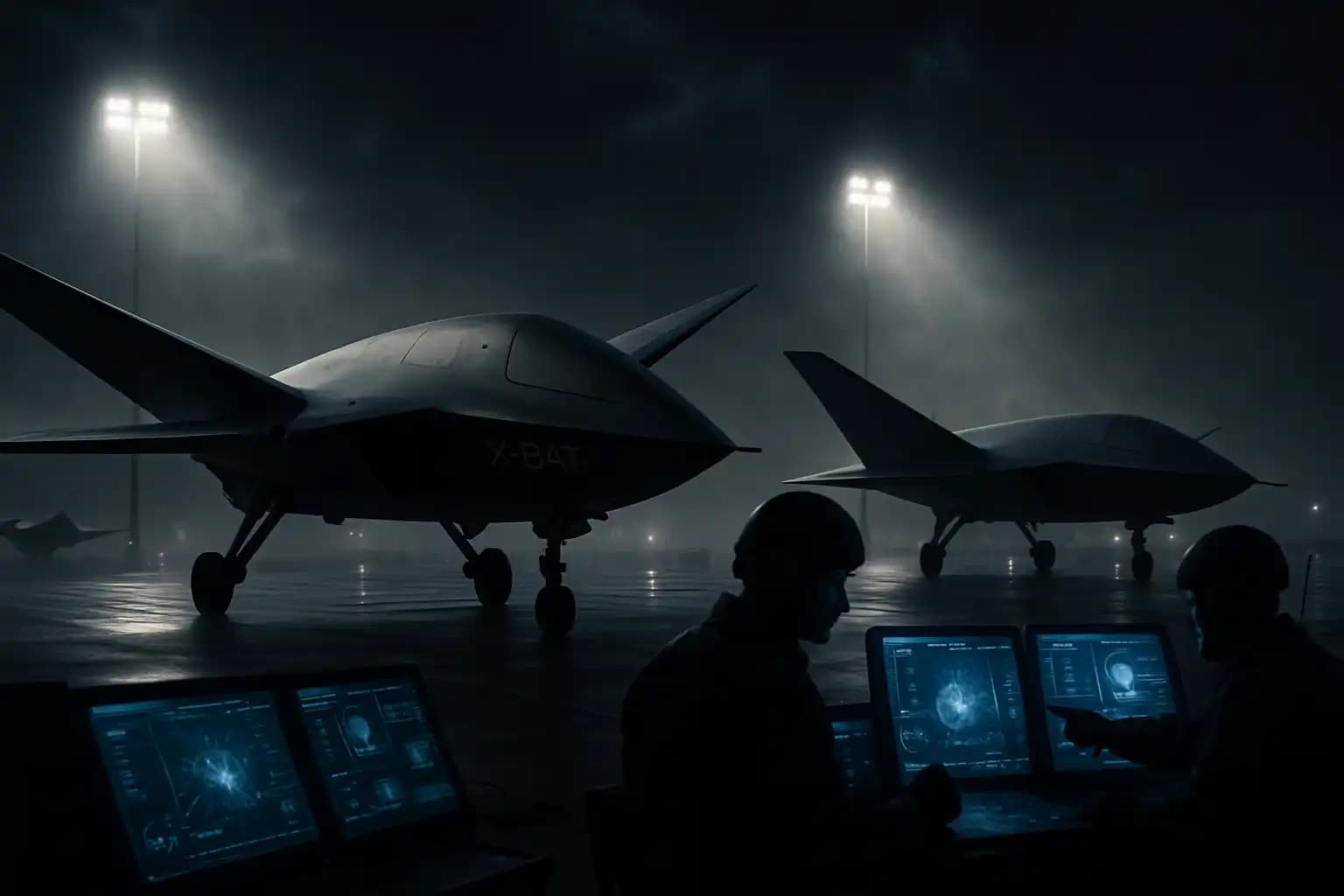AI-powered warfare is no longer looming—it is now reshaping the global arms race from Ukraine’s deserts to Pentagon war rooms and defense startups. In a candid interview with Glenn Beck, Brandon Tseng, co-founder of Shield AI, presents a vision that seems more science fiction than policy memo. The U.S. military’s expanding arsenal of autonomous aircraft, led by Shield AI’s X-BAT, is transforming military doctrine and redefining control on today’s battlefield.
Shield AI’s X-BAT: Autonomous Drones Rewriting the Rules of Combat
Launched with great anticipation in October 2025, Shield AI’s X-BAT is a VTOL fighter drone capable of operating independently or alongside human pilots—essential to the Air Force’s Collaborative Combat Aircraft (CCA) initiative. Reporting by CNBC reveals that Shield AI’s Hivemind software allows the X-BAT to autonomously execute complex missions and make decisions without human input. At approximately $27 million, X-BAT delivers performance at a fraction of traditional fighter costs. Shield AI recently secured a nearly $200 million U.S. Coast Guard contract, and with its valuation surpassing $5 billion, it appears ready for mass deployment. The Pentagon’s shift toward “affordable mass” and attritability—drones disposable yet capable of strategic missions—highlights its growing attraction.
Shield AI’s rapid ascent originates from lessons learned in Afghanistan-era attrition, yet its innovative approach resembles tech sector culture, not traditional defense giants. The firm’s swift prototyping, collaborations with Palantir for advanced manufacturing, and persistent pursuit of full autonomy set it apart in the crowded landscape of U.S. defense contractors. For insights into the evolution and ethical dilemmas of these platforms, check this field report on the AI arms race and archival coverage of technology as both tool and risk in system failure analysis.
The Global AI Arms Race: Trends, Strategy, and Deployment
The U.S. Department of Defense is not alone. As detailed in Military Embedded Systems, AI swarming, digital twins, and platform autonomy are evolving doctrine from simple navigation to fully autonomous missions, including reconnaissance, targeting, and electronic warfare. Hivemind-equipped vehicles like the MQ-35 V-BAT are already coordinating in contested zones, adapting to dynamic threats. With predictions estimating over $55 billion in AI-military investments between 2024 and 2028, the focus is shifting to strategic speed alongside lethality. The Ukrainian conflict clearly illustrates the demand for smarter, cheaper, and more agile assets—drone losses currently account for over 70% of battlefield casualties, as reported in a 2025 U.S. Army War College analysis.
Risk and innovation intertwine in this evolving landscape: campaign data analytics, logistics, and battlefield healthcare increasingly depend on smart systems. These challenges resonate with crisis management insights in these investigations into technological vulnerabilities.
Putin’s Nuclear Cruise Missile: Technical Risks and Western Skepticism
As Western companies strive for dominance in autonomous systems, Russia’s President Vladimir Putin is banking on the future shock value of nuclear-powered cruise missiles—like the Burevestnik. A 2025 PBS report states that Russia has successfully tested this “invincible” missile, which can fly for 15 hours on nuclear power. However, skepticism persists: independent analysts highlight the Burevestnik’s poor testing history and persistent reliability and control doubts. U.S. experts cited in various military assessments emphasize that extended flight times may actually increase tracking vulnerability, leaving its operational utility up for debate. These concerns are echoed in this deep dive on nuclear brinkmanship and strategic risk analyses in current deterrence discussions.
Whether reliable or not, the missile’s propaganda utility is unmistakable—beneficial for both Russia’s military-industrial complex and its global information warfare efforts, often amplified by online echo chambers energized by sensational narratives (as investigated in studies of mass myth cycles).
Autonomy’s Edge: Why the Future of Warfare Isn’t Coming—It’s Here
What implications do these developments hold for national security, human oversight, and escalating conflicts? AI and autonomy are already altering doctrines, as China, Russia, and the U.S. deploy unmanned teams, intelligent targeting, and decision-making loops that humans find hard to monitor in real time. Legal, ethical, and strategic frameworks are lagging, reminiscent of earlier nuclear deterrence debates, now complicated by the speed and opacity of algorithmic warfare. For those wary of uncontrollable technology, see this case study on AI failures and adaptive risk and crisis preparedness reporting at Unexplained.co, exploring not just how these systems operate but also the consequences of failure.
The next generation of warfare weapons isn’t theoretical. They are already in use. Coalition governments, defense innovators, and even doomsday bunker dwellers must prepare—the era of intelligent machines on the battlefield has commenced.




